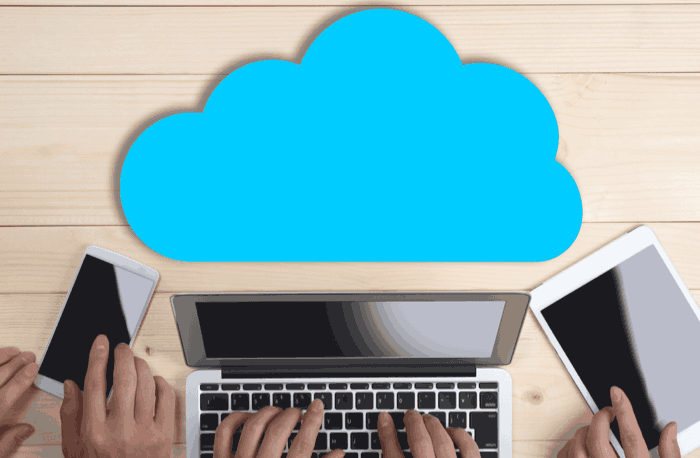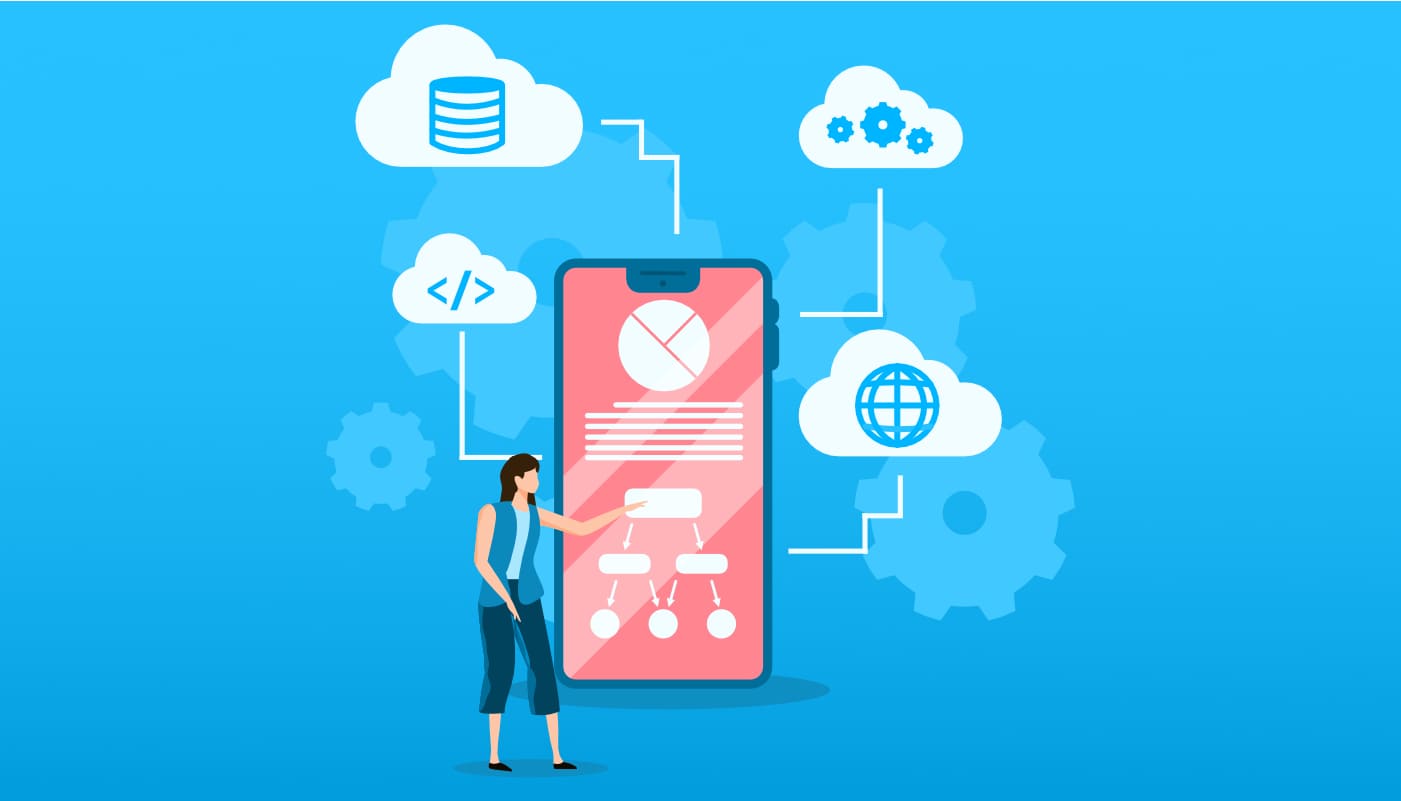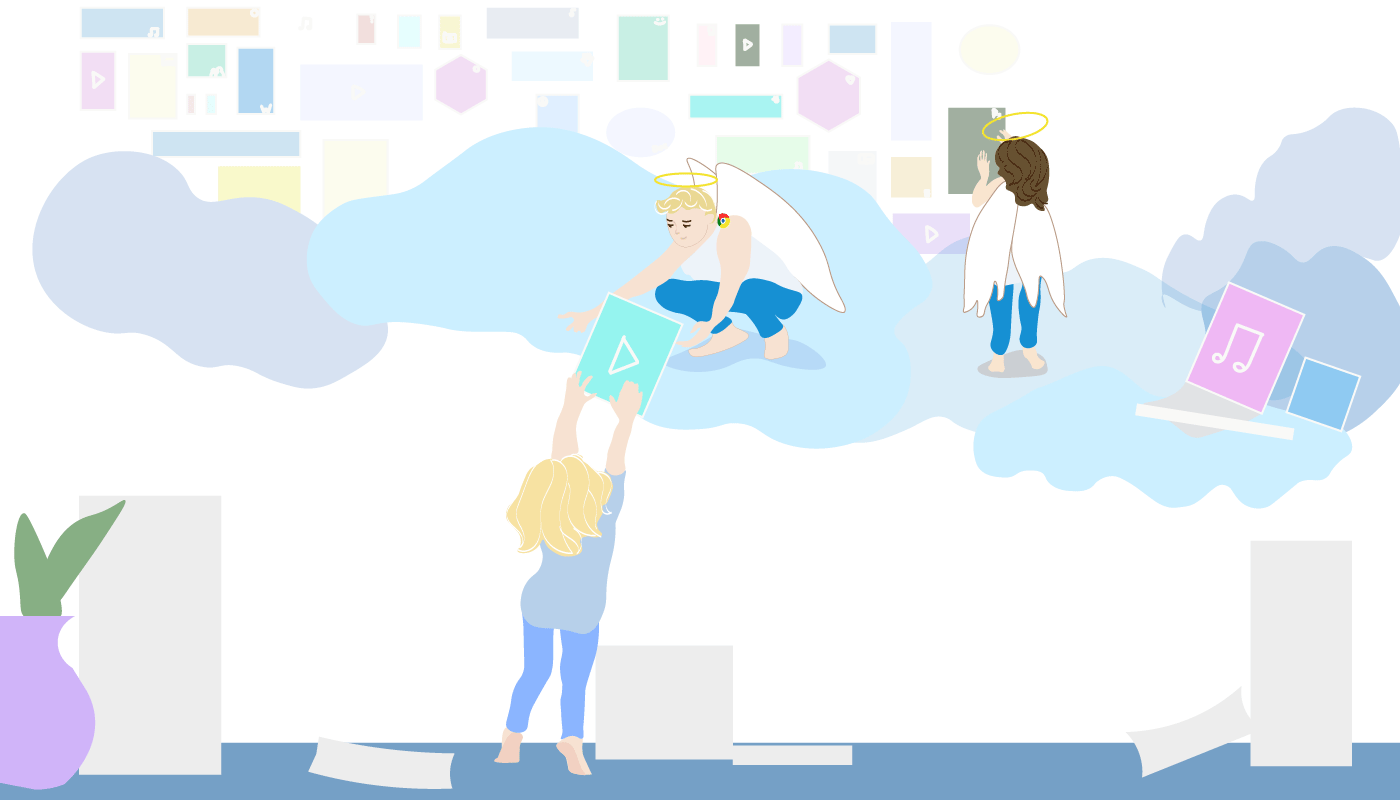There are a few key differences between SaaS and on-premise software and here are these:
| Software as a Service | On-premise software |
|---|---|
| Works online and doesn’t require installation | Has to be installed to work properly |
| All data processed by the app is stored in the cloud | Data is stored locally on user’s computer or server |
| The user always accesses the latest version of the SaaS app | The user has to download and install patches to use new features |
| The user pays a certain rate monthly or yearly for the ability to use the software | The user has to pay in advance for the lifetime license, which is usually more expensive compared to subscription Software as a Service is a great option for both users and the provider company. |
If you are ready to hit the ground with your own SaaS application – we will show you the way in this article.
We will go through two scenarios: converting your on-premises app into a SaaS one and developing a SaaS application from scratch.
How to switch from on-premises to SaaS business model?
If you’ve been delivering your services as license-based software for a few years now, this is what you have to do to convert to SaaS:
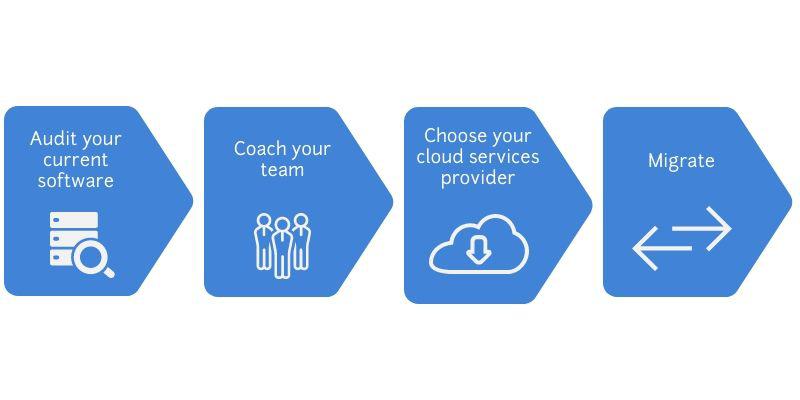
Step 1. Audit Your Current Software
Go through your app’s functionality, integrations, pricing, special offers, etc. Do you want to carry everything into your new business model or it is worth revising? Reducing the number of features or changing some integrations may be a good idea.
In the end, transfering to SaaS is much like reborn for an application. And you probably want your app to become modern, lightweight, and user-friendly.
Step 2. Coach Your Team
Much will change in the way you sell, manage and support your product. Make sure that your team is ready for these changes before they are implemented.
Teach your managers to work in new conditions or hire professionals with the relevant background with subscription-based products.
Step 3. Choose Your Cloud Services Provider
If you want your software to be available online, it should be hosted in the cloud. Conduct market research and analyze possible offers. Pay attention to all the factors important to your company: pricing options, reliability, amount of resources offered and clients’ feedback.
Step 4. Migrate to SaaS
Technical migration from on-premise to SaaS model might take from a few weeks to several months, depending on the complexity of the product, needed integrations, and the team’ expertise. Hiring SaaS experts will bring you closer to a minimal time frame.
However, the strategic decisions mentioned above will also take some time. Take it into account while making estimations.
Sometimes, you want to move your project to new technology, update libraries or completely rewrite the app’s frontend or backend. Then, the timeframe needed for technical realization might be extended.
How to build a SaaS app from scratch?
Of course, building a SaaS app from scratch requires more time and effort than migrating an existing application to software as a service model. These are the steps you have to take to develop a truly successful product:
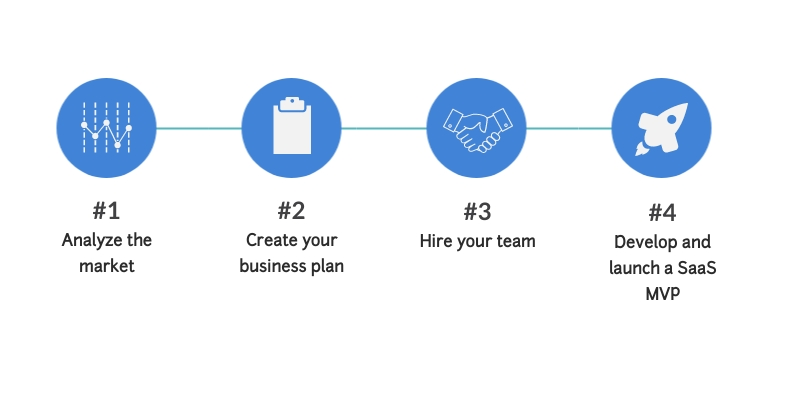
Step 1. Analyze the Market
Before starting the development process, you have to understand the environment you have to work in. Create a list of competitors, analyze the features they offer, their business models, pricing, partnerships, etc.
Also, search for the latest reviews or forums where users discuss these services. You’ll see what your target audience thinks about the available solutions, what are their current needs, pains etc.
Such analysis keeps you away from repeating competitors’ mistakes. Instead, you can choose your own path to attract and satisfy clients.
Step 2. Create Your Business Plan
Think carefully about product or service to offer to your potential audience. Your features, support, pricing are important to draw users’ attention. Along with that, it is important to understand how you will achieve this.
A business plan is your roadmap from an idea to a working product.This document should include the following vital points:
- A detailed description of your company, the product you offer, the value you aim to share with your users
- A marketing strategy is important to reach your audience. Think about different channels such as content marketing, paid traffic, social media, TV advertising, partnerships, etc. Depending on the type of product, you can select preferable channels.
- Defining the monetization strategy means clear understanding of how your app will earn money. Discuss possible subscription plans, paid upgrades, advanced support, usage of your API by other services, etc. The more revenue channels you have, the better for your business.
- Calculate the needed costs and think about various ways to fund app development. You can invest your own money, seek investors or opt for crowdfunding.
Write a business plan before you start the actual SaaS app development. You have to make sure that you have a clear roadmap and understand what awaits you in the future.
Step 3. Hire Your Team
To turn your idea into reality, you need various professionals:
- A business analyst to help you audit the existing market and create a business plan
- A designer to create a clear and trendy interface for your app
- Software developers, who are responsible for the development of your web or mobile app
- A quality assurance engineer to ensure seamless usage of your software
- A project manager to organize the work of the whole team, sync the processes, adhere to deadlines, etc.
So where do you find all these people? There are three main options:
- Hire in-house team. This looks as a number one option, but don’t hurry. It is nice to have all of your employees in one office, but this step will cost you a fortune too. Besides, sometimes there will be no job for them, but you’ll still have to pay them their salaries.
- Hire freelancers. This option is much cheaper, but you will be overwhelmed with managing all these people. Besides, freelancers usually work on multiple projects simultaneously and tend to be unreliable.
- Hire a remote team. Outsourcing is the best option in this case. You get a dedicated team, but you pay only for the actual job done. Besides, remote technical teams are usually managed internally, which gives you more time for strategic work. However, it’s crucial to hire a decent mobile application development agency to get a top-notch product tailored to your needs.
Step 4. Develop and Launch a SaaS MVP
Starting with a minimum viable product is a common strategy among entrepreneurs. You have to develop a simple product with only the core functionality and get it into real user hands in the shortest time.
Working with user feedback at this stage is your number one priority. Listen to their needs and wants and keep developing your product to satisfy your customers.
Conclusion
We have already seen major market players switching from traditional on-premise distribution model to software as a service. Think of products like Adobe Photoshop or Microsoft Word. Some popular applications have been developed as SaaS apps from scratch: Spotify, Grammarly, Slack.
It is now clear that software as a service is the new industry standard. So put your doubts aside and start developing your SaaS app straight away! LITSLINK will be your personal guide to the fascinating world of cloud-based software. Check out our IT outsourcing case studies to see the proven record of our project that can easily back up our expertise.

